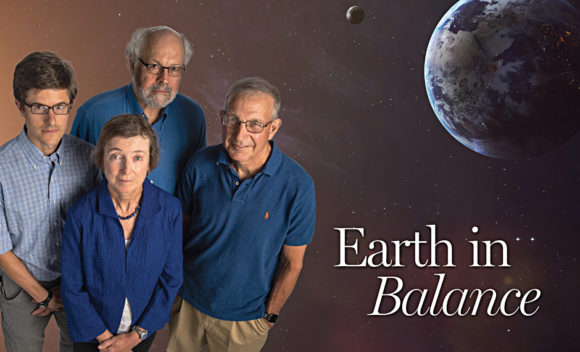
Left to right: Malin Pinsky, Jennifer Francis, Alan Robock, and Kenneth Miller. The scientists are among more than 100 faculty and staff affiliated with the Rutgers Climate Institute, which addresses myriad issues associated with climate change.
Photography: Nick Romanenko; Vadim Sadovski
Accelerating changes in the climate are a growing concern. Scientists at the Rutgers Climate Institute are evaluating the peril on many fronts.
Jennifer Francis was 22 years old when she and her future husband embarked on a five-year sailing voyage around the world that forever altered her life. Francis had always nurtured an abiding interest in the weather, but at the University of New Hampshire, where she’d completed three undergraduate years, she’d been on a path toward dental school. Those plans shifted dramatically over the course of her 50,000-mile expedition, which began on the tiny archipelago of Malta, in the central Mediterranean, and reached within 550 miles of the North Pole.
Aboard her 45-foot one-masted sloop, Francis found accurate weather forecasts impossible to come by. It was 1984, before the internet and global positioning systems. “Whatever weather information we could get was pretty much worthless. We were basically sailing blind,” she says. “I thought, ‘Here’s a good place to focus on. Clearly there’s a big need.’”
A year later, her circumnavigation complete, Francis returned home to Massachusetts, where she’d grown up in a small coastal town with “more boats than people.” After completing her undergraduate degree, now in zoology, she enrolled in the meteorology program at San Jose State University. There she had access to reams of Arctic weather data just waiting to be analyzed. For Francis, it was meteorological heaven. “I got hooked on research,” she says. Afterward, she entered a doctoral program in atmospheric sciences at the University of Washington. At the time, Francis says, “Pretty much nothing was understood about the Arctic climate and its impact on climate change elsewhere.”
That was then. In the nearly quarter-century since Francis arrived at Rutgers, where she is a research professor at the School of Environmental and Biological Sciences (SEBS), the study of Arctic meteorology and its role in global climate change has become front-page news, and Francis has emerged as one of its leading practitioners. As a climate scientist at Rutgers, she is not alone; Francis and dozens of her colleagues represent a distinguished collection of researchers who are affiliated with the Rutgers Climate Institute.
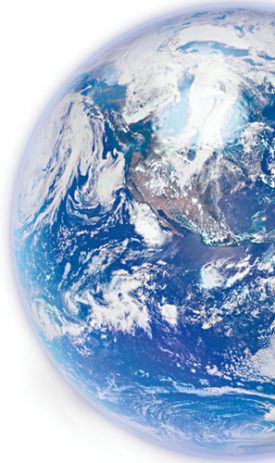 The institute was created five years ago through the merger of the Rutgers Climate and Environmental Change Initiative and the Rutgers Initiative on Climate and Society. The idea was to bridge the gap between the many fields whose study had come to involve climate science, and the result is an institute that cuts across academic disciplines, drawing more than 100 faculty and staff from 17 schools and programs in the natural and social sciences as well as the humanities. To facilitate scholarship and outreach, the institute sponsors regular “climate lunches,” which typically feature presentations by faculty members “to let their colleagues know what they’re working on and what they do,” says Anthony Broccoli, the institute’s codirector.
The institute was created five years ago through the merger of the Rutgers Climate and Environmental Change Initiative and the Rutgers Initiative on Climate and Society. The idea was to bridge the gap between the many fields whose study had come to involve climate science, and the result is an institute that cuts across academic disciplines, drawing more than 100 faculty and staff from 17 schools and programs in the natural and social sciences as well as the humanities. To facilitate scholarship and outreach, the institute sponsors regular “climate lunches,” which typically feature presentations by faculty members “to let their colleagues know what they’re working on and what they do,” says Anthony Broccoli, the institute’s codirector.
Broccoli CC’77, GSNB’79,’98 studies the mechanics of climate change at SEBS; codirector Robin Leichenko is a geographer at the School of Arts and Sciences who investigates the economic and social dimensions of climate change. That Broccoli and Leichenko represent different disciplines underscores the institute’s core mission.
“People from the medical school, the law school, social scientists, people doing humanities or studying literature have come to our events to participate,” Leichenko says, “because climate change has really become a crosscutting issue. We get a lot of interest from the sort of people who didn’t expect that climate change was the thing that they were going to be hearing about, and they’re hearing about it.”
The Climate Institute presents seminars, workshops, and an annual climate symposium. Last year’s gathering, addressing climate change and cities, drew nearly 200 students, postdocs, faculty, and staff from Rutgers and other colleges. They heard keynote speaker Cynthia E. Rosenzweig CC’80, GSNB’83, a senior research scientist at NASA’s Goddard Institute for Space Studies at Columbia University, stress the importance of cities in reducing carbon emissions and adapting to climate change on a global scale. This year’s symposium, on November 14 at the Busch Student Center at Rutgers University–New Brunswick, will look at climate change and food security.
As observers of the natural world on both land and sea, the scientists affiliated with the Climate Institute are often among the first to sound alarms about the potentially catastrophic impact of the earth’s changing climate—from rising sea levels and warming temperatures to severe drought and the proliferation of wildfires. They’ve testified before Congressional panels, received accolades from their peers, and are frequently quoted in the news media. And over the past 25 years, their research has taken them from the Raritan River and the Jersey Shore to the Arctic Ocean and the earth’s stratosphere, broadening our understanding of the impact of human activity on climate change.
Yet these days, from the Oval Office to the halls of Congress, that research often falls on deaf ears. As Rutgers scientists continue to break ground in climate science research, they inevitably have to contend with a drumbeat of unfounded skepticism. Francis concedes her frustration, but she says the current state of public discourse on climate change only makes her more determined to get the word out. “This is a huge problem,” she says, “and the longer we don’t deal with it, the worse it’s going to be, and the more expensive it’s going to be, and the more damage it’s going to cause.”
The mounting damage from climate change is uppermost on the mind of not only Francis, but also three of her colleagues, who devote their research to different aspects of climate science and who represent just a sampling of the intellect and interests of those affiliated with the Rutgers Climate Institute.
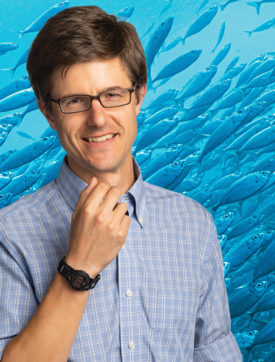
Malin Pinsky, associate professor
Malin Pinsky
Associate Professor
Department of Ecology, Evolution, and Natural Resources
School of Environmental and Biological Sciences
Malin Pinsky’s interest in the ocean blossomed early, when he was growing up in coastal Maine. He began to focus on marine biology while earning his Ph.D. at Stanford, shortly after two high-profile reports were published, each lamenting that U.S. laws governing human activity on the ocean were woefully insufficient. “They pointed out that our laws about how we interact with the ocean were really out of date,” Pinsky says. “And that we didn’t have the science we needed to know how to do it better. I got really inspired by that and wanted to help figure out that science.”
Pinsky arrived at Rutgers five years ago, but his work exploring the impact of climate change on sea life has already gained wide notice. In 2016 the International Council for the Exploration of the Sea presented Pinsky with its Early Career Scientist Award, citing his research into why some species are more vulnerable to collapse, a project that involved monitoring 154 marine fish populations around the world. In April, at a University of Toronto colloquium, Pinsky received the Rising Star in Ecology Award.
“One of the fascinating things has been seeing marine animals respond to change in climates very rapidly,” Pinsky says. “In fact, depending on how you measure it, about 10 times faster than we’re seeing it happen on land. So, it’s been this really dramatic realization over the last five to 10 years. And it’s been made possible by scientists finally focusing attention on understanding what’s happening in the ocean.”
Pinsky’s lab studies hundreds of species of marine animals, monitoring them as they colonize new territories in response to rising ocean temperatures. He’s followed with particular interest the northward migration of black sea bass, a species that was plentiful off the Virginia coast 50 years ago. Today, Pinsky says, black sea bass are concentrated 300 miles away, off the New Jersey coast, and their movement has disrupted the commercial fishing industry.
“It’s starting to create conflicts between different stakeholders who want more access to these fish, which are now in new places,” Pinsky says. “From an ecological perspective, it is probably good that these species are moving. But it’s really disruptive when species move across political boundaries. We’ve drawn lines in the ocean that the fish don’t care about.”
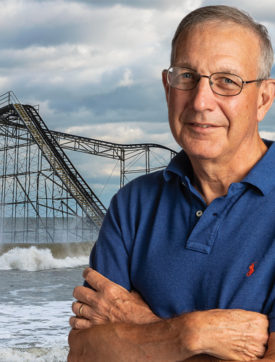
Kenneth Miller, distinguished professor
Kenneth Miller
Distinguished Professor
Department of Earth and Planetary Sciences
School of Arts and Sciences
As a geologist who studies the strata of rock layers and the microfossils found within them, Ken Miller has focused his research on climate and sea-level changes going back to the age of the dinosaurs. He’s taken part in nine scientific cruises and since 1993 has been chief scientist of the New Jersey Coastal Plain Drilling Project, which has dug thousands of feet into the soil at 17 sites along the Jersey Shore and yielded valuable records of sea-level changes as far back as 100 million years ago.
“See, it’s nice to know what the sea level did in New Jersey,” Miller RC’78 says, “but I’m probably the only person in the world who really cares what the sea level did 65 million years ago.”
The Coastal Plain Drilling Project produces samples, or cores—Miller describes them as “10-foot-long donut holes”—taken from as deep as 1,500 feet below the land surface. During a $13 million offshore drilling venture in 2009, Miller and his colleagues, working in about 100 feet of water, retrieved samples from 2,000 feet at three separate sites about 20 miles off the coast of Barnegat Light, New Jersey. At last count, Miller says, the project has dug 25,000 feet of core. His research has shed light on what he calls “the greatest hits of Earth history,” including the Cretaceous-Paleogene mass extinction, some 65 million years ago, which wiped out half of all species on the planet, including the dinosaur.
Five years ago, Miller and colleagues, including Rutgers scientists Robert Kopp, Benjamin Horton, and James Browning GSNB’96, authored a research paper, published in the journal Earth’s Future, based on their research into past sea-level activity from New York to Virginia.
“In New Jersey,” they wrote, “it is extremely likely that sea-level rise in the 20th century was faster than during any other century in the last 4.3 thousand years.” Miller adds, “We can say unequivocally, looking at sea-level records, that what’s going on now is unprecedented.”
Those results might help explain Miller’s frustration with climate change deniers. “It greatly concerns me,” he says. “There’s always going to be people who are not going to acknowledge reality—which is the nicest way I could put it—or want to live in their own reality. To not acknowledge there’s a problem is sticking your head in the sand.”
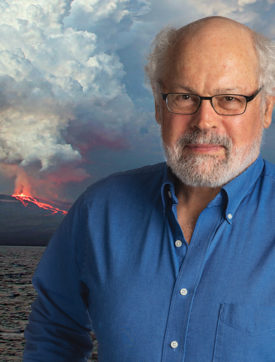
Alan Robock, distinguished professor
Alan Robock
Distinguished Professor
Department of Environmental Sciences
School of Environmental and Biological Sciences
When he arrived as a graduate student at the Massachusetts Institute of Technology (MIT) in 1972, Alan Robock was surprised to find antiwar banners and bumper stickers attached to the office door of Jule Charney, a pioneering meteorologist and member of the MIT faculty. Robock was struck by the idea that a scientist could teach students about political values as well as about science, and over the course of a 40-year career in which he’s explored many aspects of climate science and other issues related to human survival, Robock has taken heed of his mentor’s lesson.
In the 1980s, he took part in an exchange of American and Soviet scientists working on nuclear weapons issues, a collaboration he believes convinced both superpowers to de-escalate their arms race. He’s done considerable research into the climatic effects of nuclear war, often referred to as the nuclear winter, which he considers “the most serious environmental threat faced by humans.” More recently, Robock explored the humanitarian impact of nuclear war, from radiation and fire to agricultural calamity, on behalf of the International Campaign to Abolish Nuclear Weapons, which last year was awarded the Nobel Peace Prize.
Like many climate scientists, Robock expresses exasperation over politicians and others who discount the science behind human-induced climate change. “The solution to global warming is to completely change our source of energy by switching to solar and wind—some people argue nuclear—and to stop burning coal and oil and natural gas,” he says. “People make a lot of money selling that, and most decisions are based on economics.”
Yet he remains hopeful. “I’m a climatologist,” Robock says. “I look at long-term change, not day-to-day change. In the long term, we’re going to solve the global warming problem.”
Robock is one of two leaders of GeoMIP, an international alliance studying the climatic effects of human intervention to counteract climate change by reflecting some of the sun’s energy back into space, a theoretical process known as geoengineering. In 2009 testimony before the U.S. House Committee on Science, Space, and Technology, Robock said only a “planetary emergency” would merit the use of geoengineering. “It is not a solution to global warming,” he said.
Three years ago, the American Meteorological Society honored Robock in part for his “fundamental contributions toward understanding the climatic effects of stratospheric aerosols from volcanoes and other potential sources.” That award was named for Jule Charney.
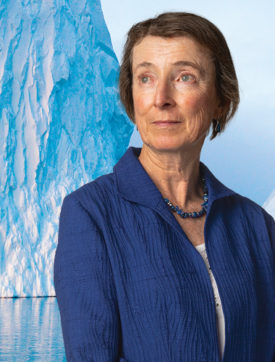
Jennifer Francis, research professor
Jennifer Francis
Research Professor
Department of Marine and Coastal Sciences
School of Environmental and Biological Sciences
If the world of climate science did not know about Jennifer Francis before March 29, 2012, it certainly knew about her afterward. On that day, the New York Times published a front-page story under the headline “Weather Runs Hot and Cold, So Scientists Look to the Ice.” The story explained that certain climate scientists were theorizing that extreme weather patterns in much of the world’s temperate latitudes could be traced to the drastic decline of sea ice in the Arctic—“believed to be a direct consequence of the human release of greenhouse gases,” the Times reported.
And then the story quoted its first source from the scientific community: “‘The question really is not whether the loss of the sea ice can be affecting the atmospheric circulation on a large scale,’ said Jennifer A. Francis. ‘The question is, how can it not be, and what are the mechanisms?’”
The story stemmed from a recently published study of the Arctic ice melt and its global implications that Francis had coauthored with Steve Vavrus, a climate scientist at the University of Wisconsin. Their paper theorized that the loss of Arctic ice had caused the jet stream to weaken, in turn causing weather patterns to stall, resulting in droughts, heat waves, and other extreme weather events. Soon the Times was regularly reporting on their work, and although many climate scientists questioned the findings—Francis acknowledges it was then merely a hypothesis still in need of further study—it’s fair to say that her life has not been the same ever since. A year later, she was testifying before the U.S. Senate Committee on Environment and Public Works, and before long she was presenting lectures to the World Bank, the U.S. Navy, and the FBI.
Today a prominent community of scientists is exploring the meteorological impact of the Arctic ice melt, and Francis has embraced her role as a public educator, seeking to show how climate change directly affects so many people. “Especially in their wallets,” she says. “They’re seeing insurance rates go up. They’re hearing about Uncle John in Nebraska having no water for his corn. People naturally are questioning what’s going on and why. Being able to answer some of those questions is really, really important, and it’s a huge role that I can play a part in.”
This article originally appeared in Rutgers Magazine.

